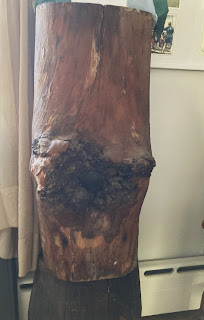The British Route: "March'd 5 Miles To Saint Cork"
When the British column left Tulls Mills, New York, on October 20, 1777, they did so without their German comrades. Once again they made little progress. Massachusetts Militia Private David How noted "This Day march'd 5 miles to Saint Cork." British Lieutenant (Lord) Francis Napier recorded "Marched to a place near St. Coicks Mills". Both were challenged by the spelling of rural place names. They stopped that night at Saint Croix, the site of its church now marked with a signpost outside North Hoosick, New York, on Route 67. [1]
October 20th was not How's first time in Saint Croix. He had marched through the area ten days earlier, on the way to reinforce Major-General Horatio Gates and the Northern Army. His militia company's route north from Pownal, in the southwest corner of Vermont, to Bennington, then east into New York took them through towns How called "old Whosuck And Saint Cook" on October 9th and 10th. [2]After the surrender at Saratoga, How and the prisoners he guarded would spend the better part of three days in the area. On the 20th, they left Tulls Mills, traveled five miles, and then stopped in Saint Croix to wait for wagons and the sick to catch up. On the 21st How noted "This morning It has Bin Very Snowy & wet. This after Noon we Set out marched about 5 miles and Stopt at Night Draw'd provisions." On the morning of the 22nd, they set out and marched through "Whosuck" and would continue on through Vermont to Williamstown, Massachusetts. [3]
Napier, like How, noted an overnight stop in Saint Croix on October 20th. Napier, unlike How, who was slowed by the wagons and sick as well as a late start, arrived in Williamstown on the 21st. [4]
How and Napier offer the basic facts, but little detail beyond that. Another account, published in London in 1789 under title Travels Through The Interior Part of North America by "An Officer", shares more. Said to be written by an Ensign Thomas Anburey of the British Army, he and those he traveled with "... were two days in crossing the Green Mountains ... the roads across them were almost impassible, and to add to the difficulty when we got half over, there came on a very heavy fall of snow." His own difficulties were compounded he related "... for this very day I had the baggage guard." Covered with snow himself, so presumably October 21st, he struggled to keep wagons and bat-horses, the baggage horses of the officers, together and moving. [5]
It was then and there his "attention was directed to a scene, which I did not think it possible human nature could have supported." The pregnant wife of a British soldier he writes "small, and of a very delicate constitution", had her baby on a baggage wagon, with only a piece of an old oil-cloth for shelter. Remarkably, both continued on with the column to Cambridge, and were doing well after their arrival. [6]
A second adventure awaited him the night before arrival he arrived in Williamstown. That night he was "quartered in a small log hut" without his baggage, his servant and bat-horse being delayed along the way. As there were only two beds in the house, he asked where he was to sleep. Husband and wife would sleep in one bed he was informed, and he and their daughter "Jemima", who he supposed to be sixteen or seventeen years old, were to use the other. In a testament to his own noble nature he resisted the temptation, declined and sat through the night instead he claimed. [7]
The trip from Tulls Mills through Saint Croix and Hoosick would have also taken Anburey and his companions very near the site of what is known as the Battle of Bennington. Despite the Vermont association of its name, the fighting on August 16, 1777, occurred in New York, on and near what is now a state historic site. My own most recent trip to the area brought me to the home of the Hoosick Township Historical Society in Hoosick Falls. Director Joyce Brewer and volunteers at the Louis Miller Museum were welcoming and helpful, explaining not only their town's connection with the battle, but much more of its history, including in the late 19th century the manufacturing of horse drawn farm implements by the Walter A. Wood Mowing and Reaping Machine Company, and in the 20th century, famous folk artist Grandma Moses and singers the Eberle Brothers.The Historical Society's museum is home to a cannonball from the battle embedded in a section of tree trunk, will be hosting "The Hoosick History and Heritage Fair" on May 20th, as well as other events over the summer, and shares updates on their Facebook page.





Comments
Post a Comment